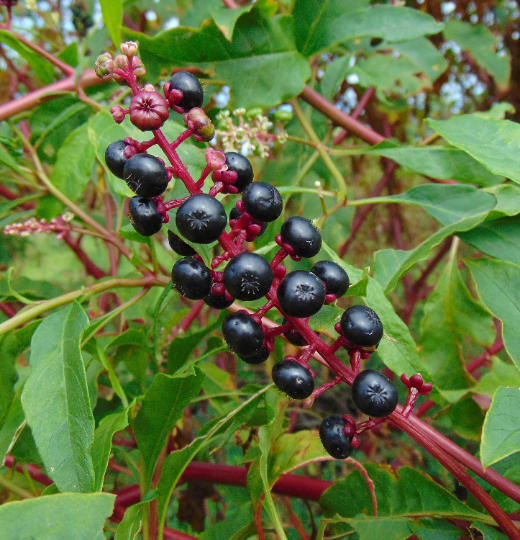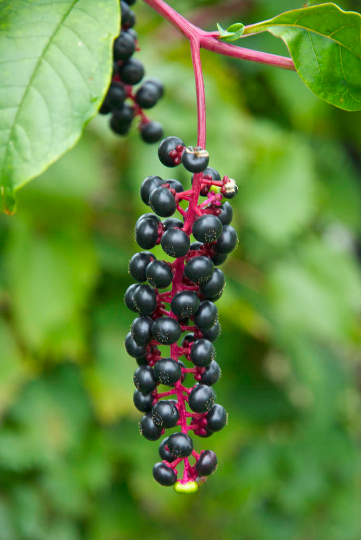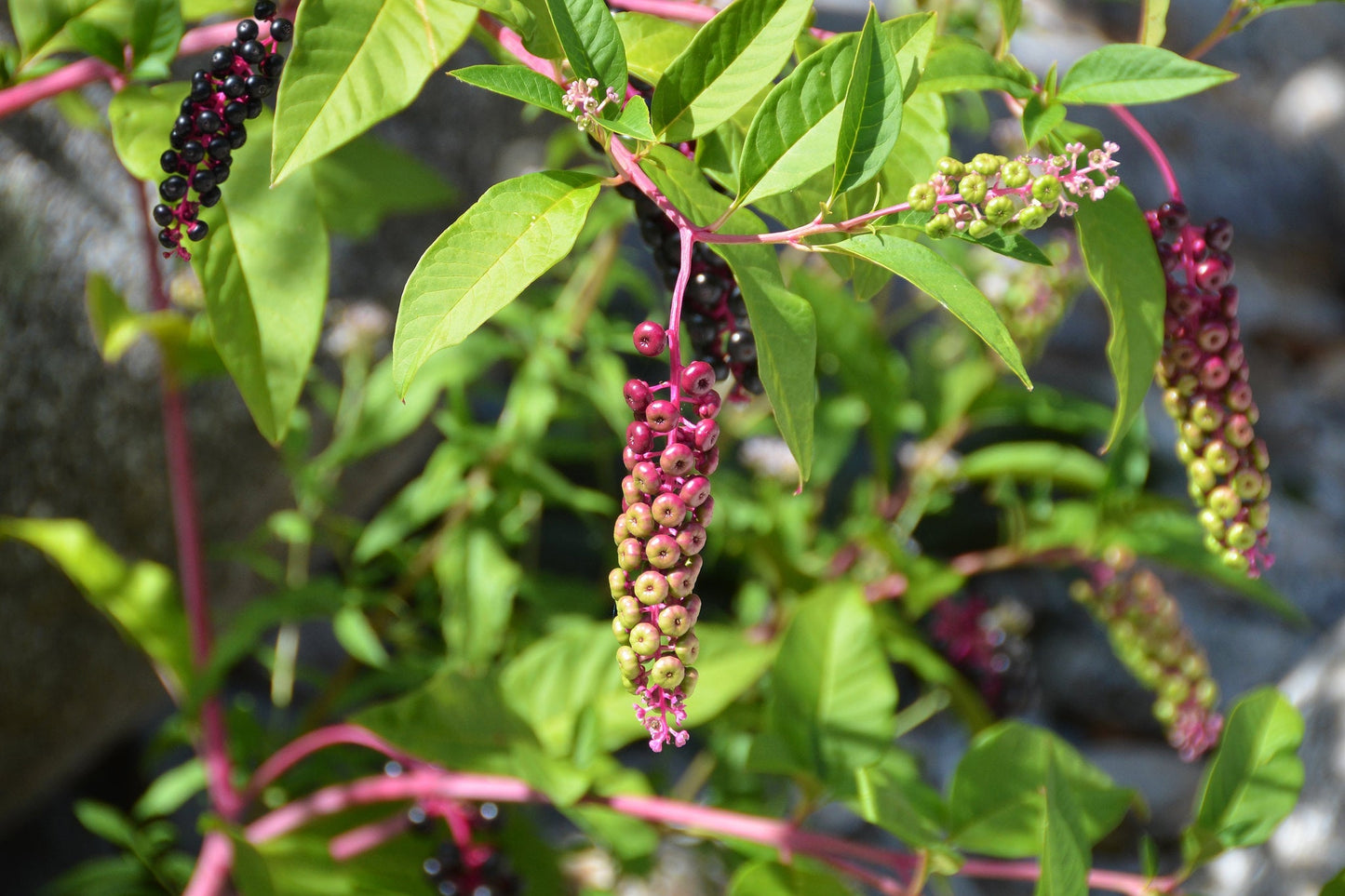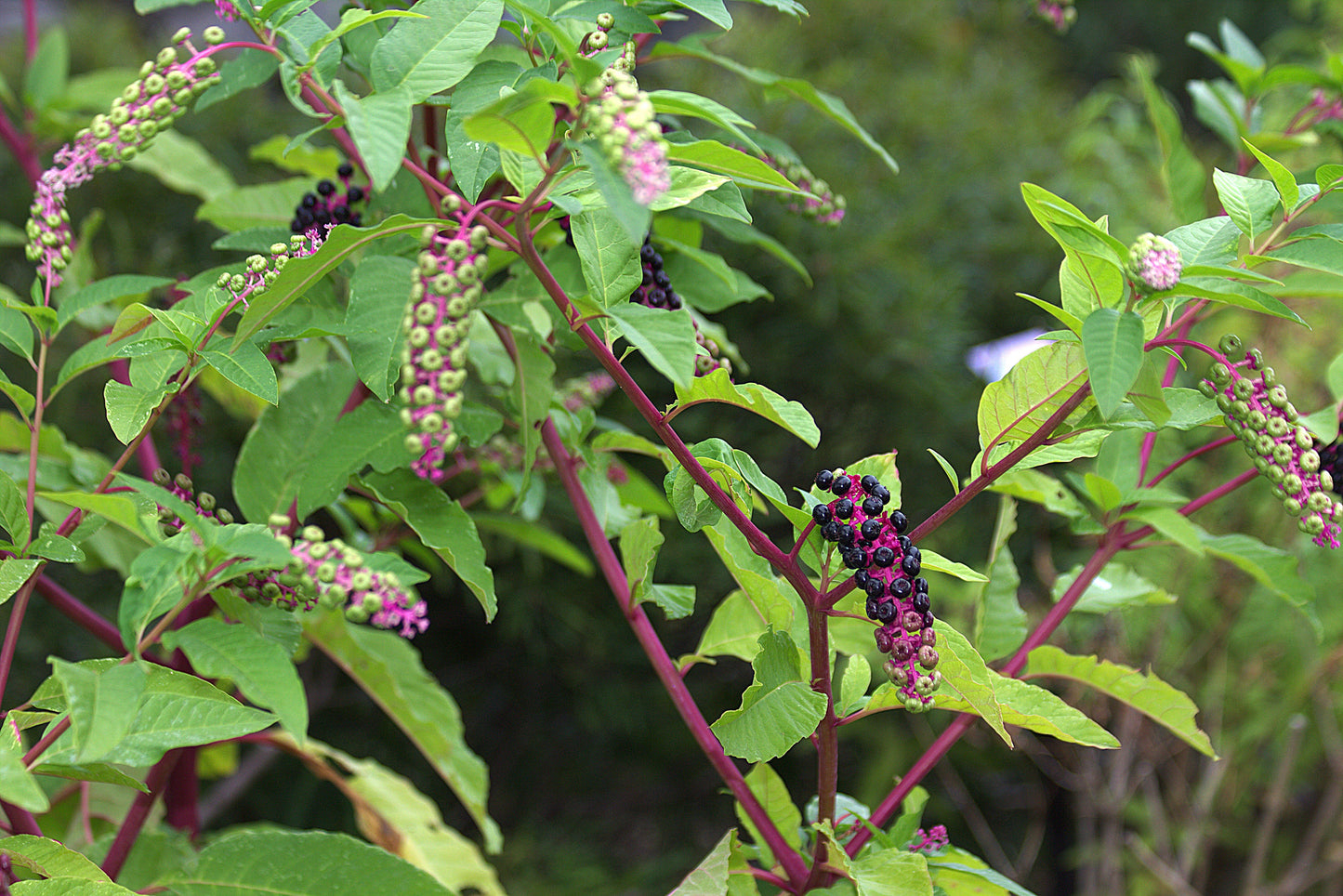Floridaseeds
American Pokeweed Phytolacca americana 200 Seeds USA Company
American Pokeweed Phytolacca americana 200 Seeds USA Company
Couldn't load pickup availability
Phytolacca americana, commonly known as pokeweed or American pokeweed, is a herbaceous perennial plant native to North America. Here are some key points about it:
Description: Pokeweed typically grows as a large, branching herbaceous plant, reaching heights of 4 to 10 feet. It has smooth, reddish-purple stems and large, elliptical leaves that can grow up to 12 inches long. The plant produces clusters of small white flowers in the summer, followed by clusters of dark purple to black berries in the fall.
Habitat: Pokeweed is commonly found in disturbed areas, along roadsides, in fields, and at the edges of forests. It prefers moist, fertile soil and is often considered a weed in agricultural areas.
Toxicity: All parts of the pokeweed plant are toxic to humans if ingested, especially the roots and berries. The toxins present in pokeweed, particularly phytolaccatoxin and phytolaccigenin, can cause vomiting, diarrhea, and other gastrointestinal symptoms if consumed. However, it's worth noting that some parts of the plant have been used in traditional medicine by Indigenous peoples, but they require careful preparation to remove the toxins.
Wildlife Value: Despite its toxicity to humans, pokeweed berries are an important food source for birds, particularly during the fall and winter months. Many bird species, including northern cardinals, bluebirds, and robins, consume the berries and help to disperse the seeds. Hardy in zones 4-9.
Growing Instructions
- Soak the seeds in water for several hours.
- Put a mixture of potting soil and sand or perlite into a pot with drainage holes in the base. The soil should be moist and well-drained.
- Sow the seeds on the soil.
- Water the seeds. Keep the soil moist but not wet.
- When the plants are a few inches tall, they can be transplanted.
Materials
Materials
Shipping & Returns
Shipping & Returns
Dimensions
Dimensions
Care Instructions
Care Instructions
Share












